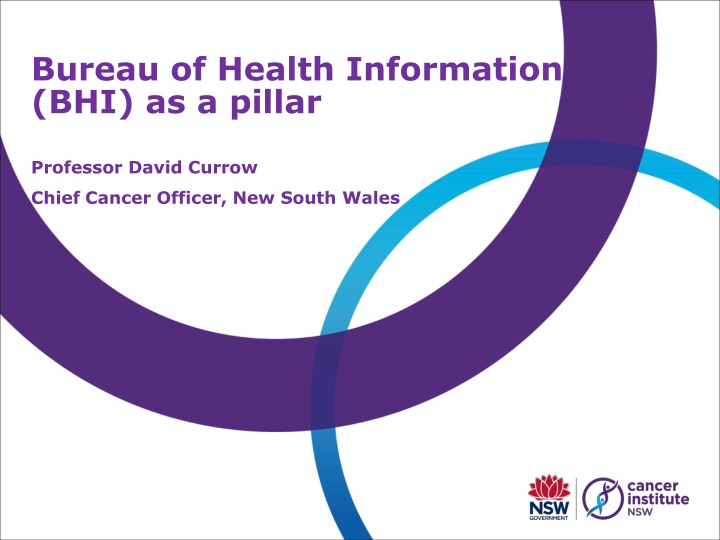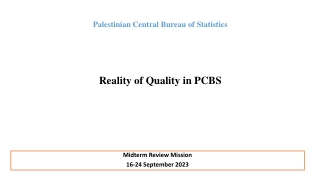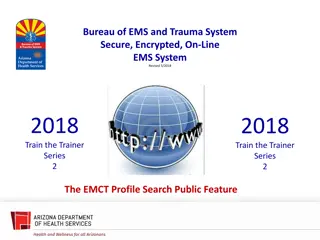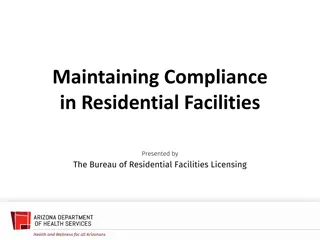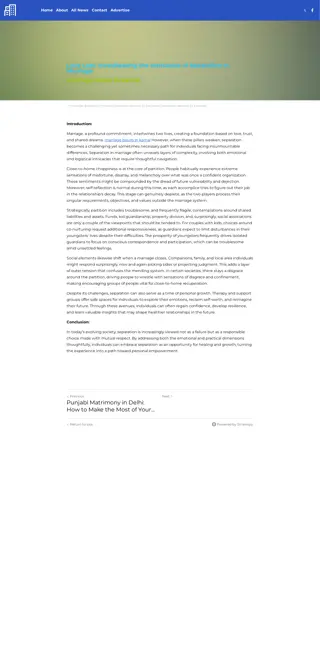Bureau of Health Information - Improving Health Outcomes Through Analysis and Communication
The Bureau of Health Information (BHI) plays a critical role in measuring, analyzing, and communicating health system performance to ensure the best outcomes for people in New South Wales. By focusing on patient-centered outcomes and reducing variations in mortality and quality of life, BHI aims to enhance healthcare quality and safety. The mantra of measuring, analyzing, benchmarking, and communicating guides BHI in its mission to drive continuous improvement in health services.
Uploaded on Mar 10, 2025 | 1 Views
Download Presentation

Please find below an Image/Link to download the presentation.
The content on the website is provided AS IS for your information and personal use only. It may not be sold, licensed, or shared on other websites without obtaining consent from the author.If you encounter any issues during the download, it is possible that the publisher has removed the file from their server.
You are allowed to download the files provided on this website for personal or commercial use, subject to the condition that they are used lawfully. All files are the property of their respective owners.
The content on the website is provided AS IS for your information and personal use only. It may not be sold, licensed, or shared on other websites without obtaining consent from the author.
E N D
Presentation Transcript
Bureau of Health Information (BHI) as a pillar Professor David Currow Chief Cancer Officer, New South Wales
Bureau of Health Information Any health system that fails to measure, analyse, benchmark and communicate its performance and act on these findings is: failing to deliver the best health outcomes to the people it serves; and tolerating unwarranted variations in outcomes including mortality.
Bureau of Health Information (BHI) I was asked to speak about BHI becoming a pillar in New South Wales. Frankly, it is the wrong question. The question should be Why is BHI not the pillar around which all of health is built?
Patient-centred outcomes Quality Patient-centred Driven by information - My care is based on the best knowledge and evidence - The outcome of my treatment and my experiences are used to help improve care Organised for safety Australian Commission on Safety and Quality in Healthcare. Nationally endorsed Framework 2010
Patient-centred outcomes Reducing unwarranted variations in: mortality morbidity quality of life
Bureau of Health Information Measure Analyse Benchmark Communicate
Bureau of Health Information Measure Analyse Benchmark Communicate
Perfection is the enemy of progress Dans ses crits, un sage Italien dit que le mieux est l'ennemi du bien. (In his writings, a wise Italian says that the best is the enemy of the good) Voltaire La B gueule (The Prude)
Bureau of Health Information Measure Analyse Benchmark Communicate
Bureau of Health Information Despite our best intentions, getting the right treatment is somewhat of a lottery Everywhere we look there are variations in practice and outcomes not explained by the mix of cases (casemix) Your health outcomes are likely to be worse if you are socio-economically challenged, from an Aboriginal or Torres Strait Islander community or live in a rural area There is post-code variation even in non-rural areas If we are to meet the goal to ensure every patient gets the right treatment at the right time in the right place, we must understand this variation with greater levels of granularity.
Bureau of Health Information Measure Analyse Benchmark Communicate
Bureau of Health Information Measure Analyse Benchmark Communicate
Level of health literacy and socioeconomic status Source: AIHW Australia s Health 2010
Factors Influencing Systematic Implementation Patient Level Factors e.g. choice, performance status, access, age Physician Level Factors e.g. involvement in research, training, preferences, multidisciplinary teams, attitudes System Factors e.g. payment systems, clinical governance, data availability, pathways to diagnosis & treatment
And the future? Ongoing monitoring of differences in outcomes as a result of the analysis and communication of findings to clinicians, health planners and the community. Evaluating new and emerging practice changes with greater levels of sophistication from the time that they are conceived.
